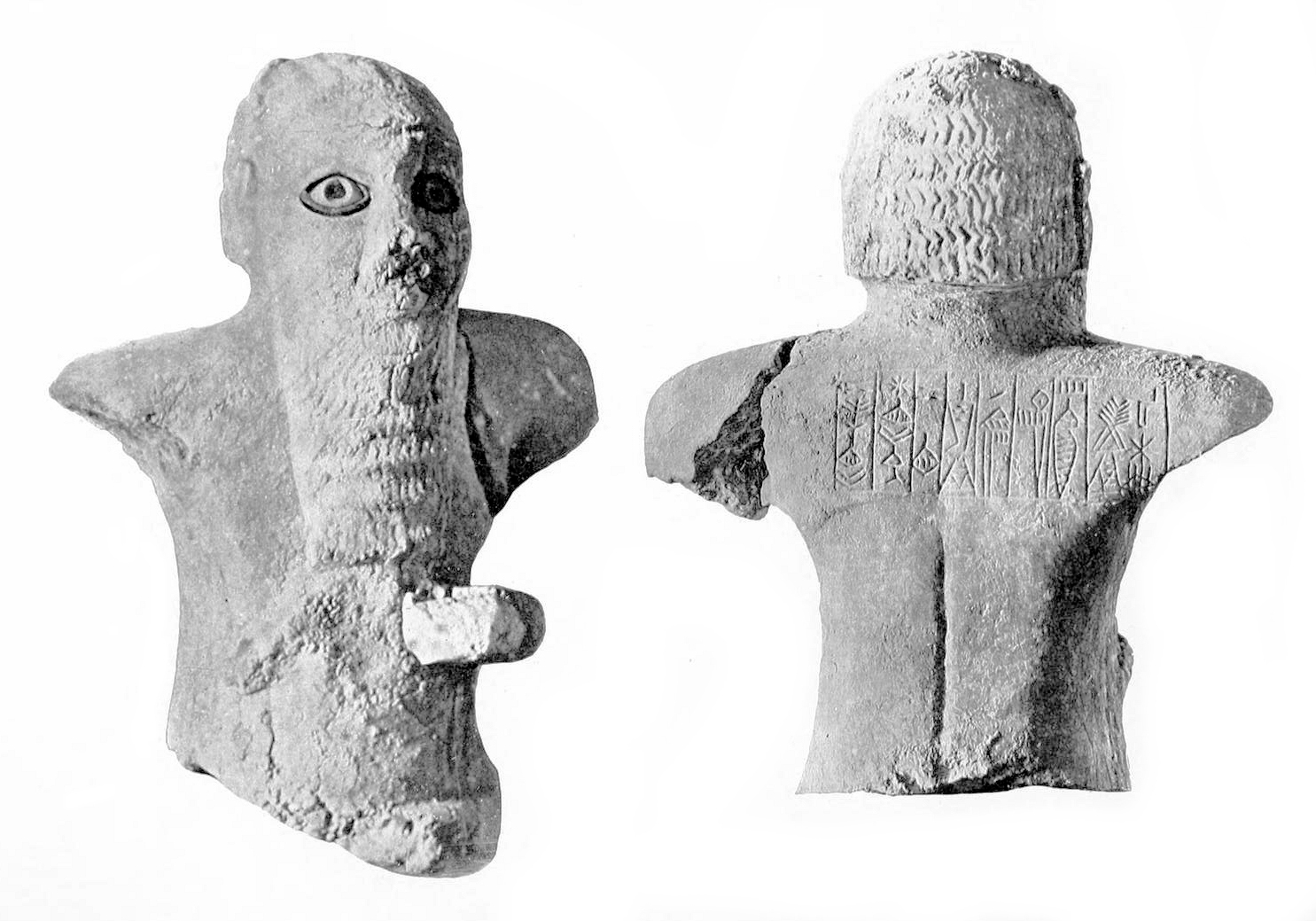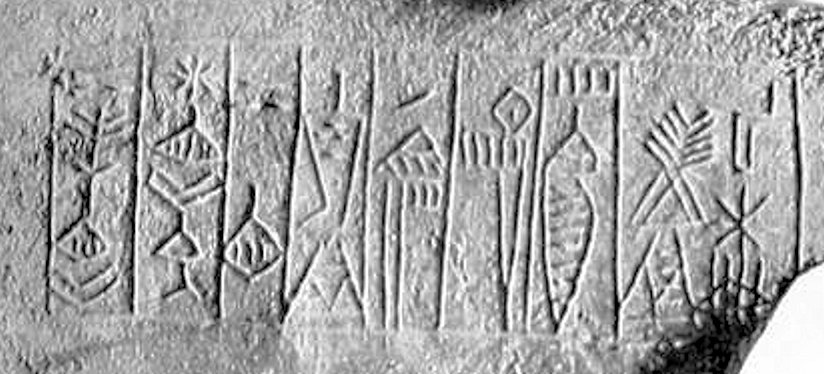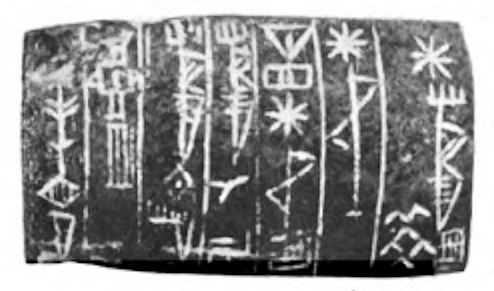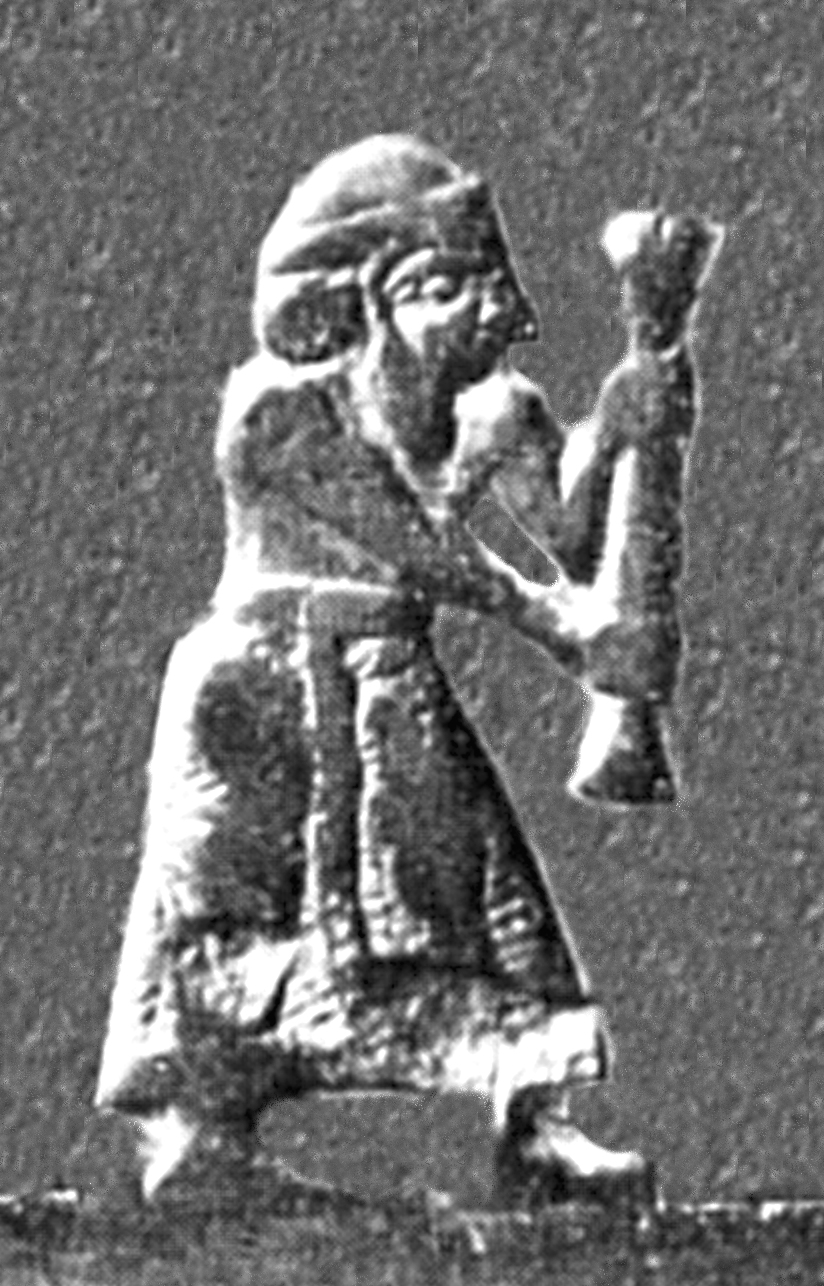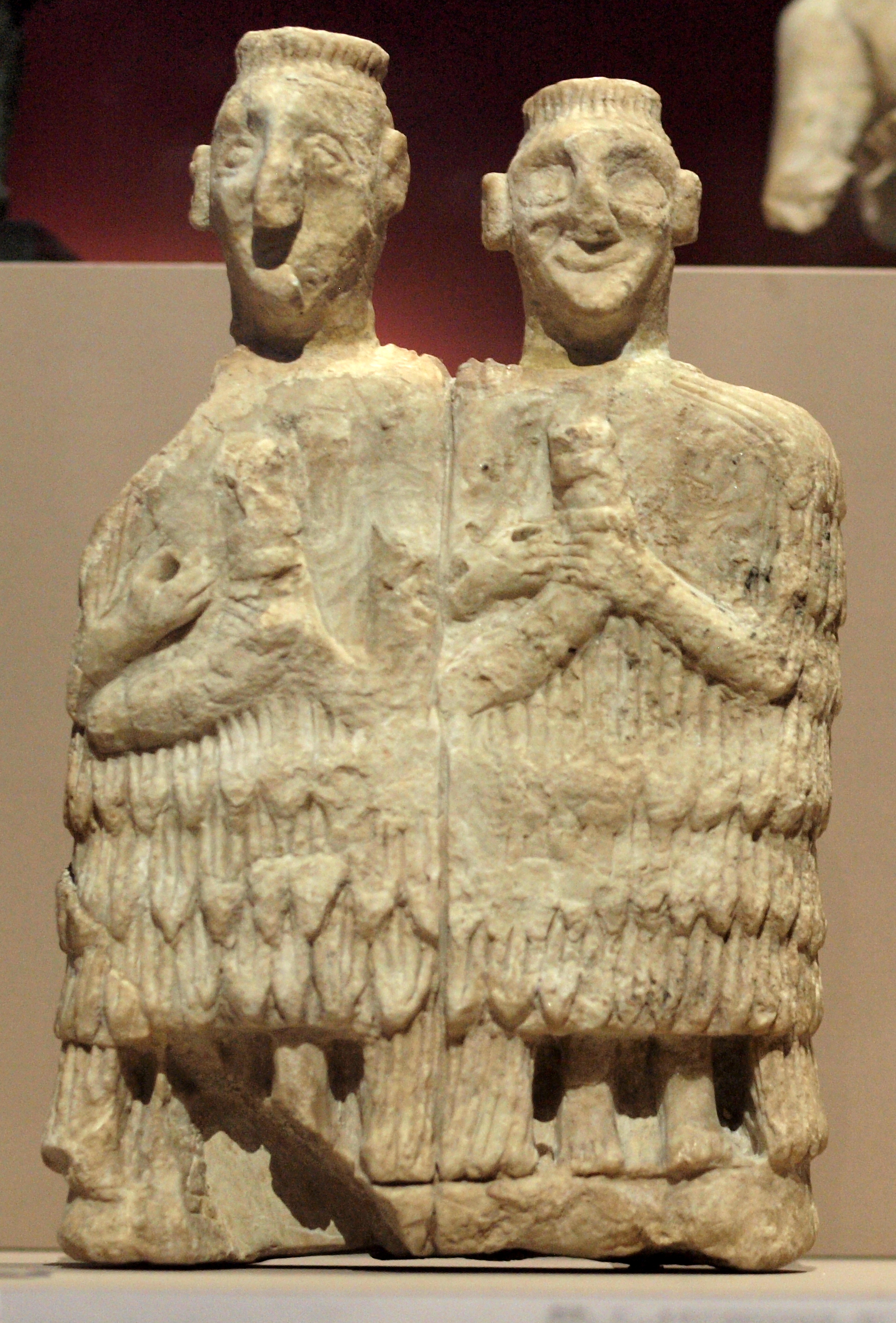|
Narundi
Narundi ( dingir, dna-ru-ti) or Narunde was an Elamite religion, Elamite goddess worshiped in Susa. She is attested there roughly between 2250 BCE and 1800 BCE. Multiple inscriptions mention her, and it assumed she was a popular deity at the time. In later periods, she occurs exclusively in Mesopotamia, where she played a role in apotropaic rituals in association with the Sebitti. Many attestations are available from late Assyrian sources, but it is not certain if they should be regarded as an indication of continuous worship. In Elam Narundi is the oldest attested Elamite deity. She first appears in sources contemporaneous with the reign of the Akkadian Empire, and according to Javier Álvarez-Mon enjoyed a degree of popularity in the early periods. Heidemarie Koch suggested that she functioned as the goddess of victory. She was worshiped in Susa at least since around 2260 BCE, as indicated by a statue dedicated to her found in the so-called "Manishtushu shrine." Its style is ch ... [...More Info...] [...Related Items...] OR: [Wikipedia] [Google] [Baidu] |
Puzur-Inshushinak
Puzur-Inshushinak (Linear Elamite: ''Puzur Sušinak''; Akkadian: , ''puzur3- dinšušinak'', also , ''puzur4- dinšušinak'' " Inshushinak (is) protection"; ), also sometimes thought to read Kutik-Inshushinak in Elamite, was a king of Elam, and the last from the Awan dynasty according to the Susa kinglist. He mentions his father's name as Šimpi-išhuk, which, being an Elamite name, suggests that Puzur-Inshuhinak himself was Elamite. Early life Under the Akkadian Empire (c. 2334-2154 BC), Elam had been a vassal since the time of Sargon. His father was Shinpi-khish-khuk, the crown prince, and most likely a brother of Khita. Kutik-Inshushinak's first position was as governor of Susa, which he may have held from a young age. Around 2150/2110 BC his father died, and he became crown prince in his stead. Reign Kutik-Inshushinak accordingly campaigned in the Zagros mountains on their behalf. He was greatly successful as his conquests seem to have gone beyond the initial mission. ... [...More Info...] [...Related Items...] OR: [Wikipedia] [Google] [Baidu] |
Mesopotamian Pantheon
Deities in ancient Mesopotamia were almost exclusively Anthropomorphism, anthropomorphic. They were thought to possess extraordinary powers and were often envisioned as being of tremendous physical size. The deities typically wore ''melam'', an ambiguous substance which "covered them in terrifying splendor" and which could also be worn by heroes, kings, giants, and even demons. The effect that seeing a deity's ''melam'' has on a human is described as ''ni'', a word for the "Paresthesia, physical creeping of the flesh". Both the Sumerian language, Sumerian and Akkadian languages contain many words to express the sensation of ''ni'', including the word ''puluhtu'', meaning "fear". Deities were almost always depicted wearing horned caps, consisting of up to seven superimposed pairs of ox-horns. They were also sometimes depicted wearing clothes with elaborate decorative gold and silver ornaments sewn into them. The ancient Mesopotamians believed that their deities lived in Heaven, ... [...More Info...] [...Related Items...] OR: [Wikipedia] [Google] [Baidu] |
Elamite Religion
Elam () was an ancient civilization centered in the far west and southwest of Iran, stretching from the lowlands of what is now Khuzestan and Ilam Province as well as a small part of modern-day southern Iraq. The modern name ''Elam'' stems from the Sumerian transliteration ''elam(a)'', along with the later Akkadian ''elamtu'', and the Elamite ''haltamti.'' Elamite states were among the leading political forces of the Ancient Near East. In classical literature, Elam was also known as Susiana ( ; ''Sousiānḗ''), a name derived from its capital Susa. Elam was part of the early urbanization of the Near East during the Chalcolithic period (Copper Age). The emergence of written records from around 3000 BC also parallels Sumerian history, where slightly earlier records have been found. In the Old Elamite period (Middle Bronze Age), Elam consisted of kingdoms on the Iranian plateau, centered in Anshan, and from the mid-2nd millennium BC, it was centered in Susa in the Khuzestan ... [...More Info...] [...Related Items...] OR: [Wikipedia] [Google] [Baidu] |
Eshpum
Eshpum ( ''esh18-pum'', formerly read Geba; died 2255 BC) was an Akkadian Governor of Elam around 2269–2255 BC. Reign In the Akkadian Empire he was a vassal of king Manishtushu. While Eshpum was in charge of Elam, another Governor of Manistushu named Ilshu-rabi Ilshu-rabi, also Ilšu-rabi ( ''Il-shu-rabi''; died 2255 BC) was a ruler of Pashime around 2269–2255 BC. He was a vassal of the Akkadian Empire ruler Manishtushu. While Ilshu-rabi was in charge of Pashime, another Governor of Manistushu named ... was in charge of Pashime, in the coastal area. Attestations Votive statue An archaic statue of an orant is known, which was re-dedicated about 500 years later by Eshpum. It reads: File:Eshpum votive statue.jpg, Archaic votive statue (c. 2700 BCE) dedicated by Eshpum, with his inscription in the back File:Exhibit at Lovre Museum, Paris 06.jpg, Detail of the statue Seal inscriptions "Eshpum, Governor of Elam" Another inscription of Eshpum is known, which reads "Esh ... [...More Info...] [...Related Items...] OR: [Wikipedia] [Google] [Baidu] |
Shamash
Shamash (Akkadian language, Akkadian: ''šamaš''), also known as Utu (Sumerian language, Sumerian: dutu "Sun") was the List of Mesopotamian deities, ancient Mesopotamian Solar deity, sun god. He was believed to see everything that happened in the world every day, and was therefore responsible for justice and protection of travelers. As a divine judge, he could be associated with the Ancient Mesopotamian underworld, underworld. Additionally, he could serve as the god of divination, typically alongside the weather god Adad. While he was universally regarded as one of the primary gods, he was particularly venerated in Sippar and Larsa. The Moon God, moon god Nanna (Sumerian deity), Nanna (Sin) and his wife Ningal were regarded as his parents, while his twin sister was Inanna (Ishtar). Occasionally other goddesses, such as Manzat (goddess), Manzat and Pinikir, could be regarded as his sisters too. The dawn goddess Aya (goddess), Aya (Sherida) was his wife, and multiple texts describe ... [...More Info...] [...Related Items...] OR: [Wikipedia] [Google] [Baidu] |
Manishtushu
Manishtushu (Man-ištušu) (, ''Ma-an-ish-tu-su''; died 2255 BC) was the third (or possibly second) king of the Akkadian Empire, reigning 15 years c. 2270 BC until his death c. 2255 BC. His name means "Who is with him?". He was the son of Sargon of Akkad, Sargon the Great, the founder of the Akkadian Empire, and he was succeeded by his son, Naram-Sin of Akkad, Naram-Sin who also deified him posthumously. A cylinder seal, of unknown provenance, clearly from the reign of Naram-Sin or later, refers to the deified Manishtushu i.e. "(For) the divine Man-istusu: Taribu, the wife of Lugal-ezen, had (this seal) fashioned". Texts from the later Ur III period show offerings to the deified Manishtushu (spelled ᵈMa-iš-ti₂-su or ᵈMa-an-iš-ti₂-su). The same texts mention a town of ᵈMa-an-iš-ti₂-su where there was a temple of Manishtushu. This temple was known in the Sargonic period as Ma-an-iš-t[i-s]uki. Biography Manishtushu was the third king of the Akkadian Empire accordi ... [...More Info...] [...Related Items...] OR: [Wikipedia] [Google] [Baidu] |
Linear Elamite
Linear Elamite was a writing system used in Elam during the Bronze Age between , and known mainly from a few extant monumental inscriptions. It was used contemporaneously with Elamite cuneiform and records the Elamite language. The French archaeologist and his colleagues have argued that it is the oldest known purely phonographic writing system, although others, such as the linguist Michael Mäder, have argued that it is partly logographic. There have been multiple attempts to decipher the script, aided by the discovery of a limited number of multilingual and bigraphic inscriptions. Early efforts by (1912) and Ferdinand Bork (1905, 1924) made limited progress. Later work by and furthered the work. Starting in 2018, Desset outlined some of his proposed decipherments of the script accomplished with a team of other scholars. Their proposed near-complete decipherment was published in 2022, being received positively by some researchers while others remain sceptical until detaile ... [...More Info...] [...Related Items...] OR: [Wikipedia] [Google] [Baidu] |
Innana
Inanna is the List of Mesopotamian deities, ancient Mesopotamian goddess of war, love, and fertility. She is also associated with political power, divine law, sensuality, and procreation. Originally worshipped in Sumer, she was known by the Akkadian Empire, Akkadians, Babylonian religion, Babylonians, and Assyrians as Ishtar. Her primary title is Queen of Heaven (antiquity), "the Queen of Heaven". She was the patron goddess of the Eanna temple at the city of Uruk, her early main religious center. In archaic Uruk, she was worshipped in three forms: morning Inanna (Inana-UD/hud), evening Inanna (Inanna sig), and princely Inanna (Inanna NUN), the former two reflecting the phases of her associated planet Venus. Her most prominent symbols include the Lion of Babylon, lion and the Star of Ishtar, eight-pointed star. Her husband is the god Dumuzid (later known as Tammuz), and her (attendant) is the goddess Ninshubur, later conflated with the male deities Ilabrat and Papsukkal. Inanna ... [...More Info...] [...Related Items...] OR: [Wikipedia] [Google] [Baidu] |
Kaunakes
A ''kaunakes'' (, or ; ; ; or ''persis''; or or ) was a woollen mantle associated with ancient Mesopotamia and Persia. It was woven in a tufted pattern, suggesting overlapping petals or feathers by sewing tufts onto the garment or looping them into the fabric. Background The origin of this dress is traced to the Sumerian civilization, which existed even before 4,000 BC. Pre-Dynastic period (4000-2700 BC): kilts and "net-dresses" The earliest type of dress attested in early Sumerian art is not the ''kaunakes'', but rather a kilt or "net dress" which quite closely fits the lower body, while the upper body remains bare. This early net dress looks much more similar to standard textile than the later ''kaunakes'', which look more like sheepskin with ample bell-shaped volume around the waist and the legs. File:Uruk_King_priest_feeding_the_sacred_herd.jpg, Cylinder seal from Uruk, with "net-dress", 3100 BC File:Stele_of_lion_hunt,_from_Uruk,_Iraq,_3000-2900_BCE._Iraq_Museum.jpg, K ... [...More Info...] [...Related Items...] OR: [Wikipedia] [Google] [Baidu] |
Inanna
Inanna is the List of Mesopotamian deities, ancient Mesopotamian goddess of war, love, and fertility. She is also associated with political power, divine law, sensuality, and procreation. Originally worshipped in Sumer, she was known by the Akkadian Empire, Akkadians, Babylonian religion, Babylonians, and Assyrians as Ishtar. Her primary title is Queen of Heaven (antiquity), "the Queen of Heaven". She was the patron goddess of the Eanna temple at the city of Uruk, her early main religious center. In archaic Uruk, she was worshipped in three forms: morning Inanna (Inana-UD/hud), evening Inanna (Inanna sig), and princely Inanna (Inanna NUN), the former two reflecting the phases of her associated planet Venus. Her most prominent symbols include the Lion of Babylon, lion and the Star of Ishtar, eight-pointed star. Her husband is the god Dumuzid (later known as Tammuz), and her (attendant) is the goddess Ninshubur, later conflated with the male deities Ilabrat and Papsukkal. Inanna ... [...More Info...] [...Related Items...] OR: [Wikipedia] [Google] [Baidu] |
Enlil
Enlil, later known as Elil and Ellil, is an List of Mesopotamian deities, ancient Mesopotamian god associated with wind, air, earth, and storms. He is first attested as the chief deity of the Sumerian pantheon, but he was later worshipped by the Akkadian Empire, Akkadians, Babylonian Empire, Babylonians, Assyrian Empire, Assyrians, and Hurrians. Enlil's primary center of worship was the Ekur temple in the city of Nippur, which was believed to have been built by Enlil himself and was regarded as the "mooring-rope" of heaven and earth. He is also sometimes referred to in Sumerian texts as Nunamnir. According to one Sumerian hymn, Enlil himself was so holy that not even the other gods could look upon him. Enlil rose to prominence during the twenty-fourth century BC with the rise of Nippur. His Cult (religious practice), cult fell into decline after Nippur was sacked by the Elamites in 1230 BC and he was eventually supplanted as the chief god of the Mesopotamian pantheon by the Baby ... [...More Info...] [...Related Items...] OR: [Wikipedia] [Google] [Baidu] |
